Beyond Reykjavík: From Hot Springs to Northern Lights
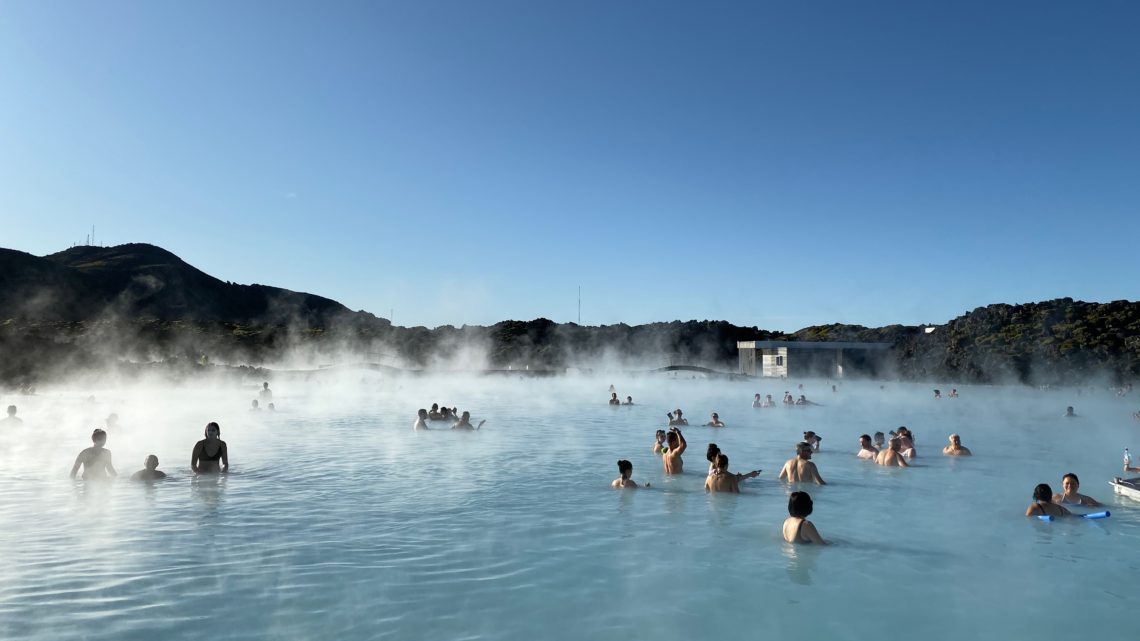
Throughout my travels in Iceland, I enjoyed exploring Reykjavík’s colorful architecture and experiencing its Nordic culture. However, the real beauty of Iceland is in the countryside just beyond the city. The island’s landscape is like no other I have ever seen, primarily due to its location at the boundary of the North American and European tectonic plates.
The Blue Lagoon
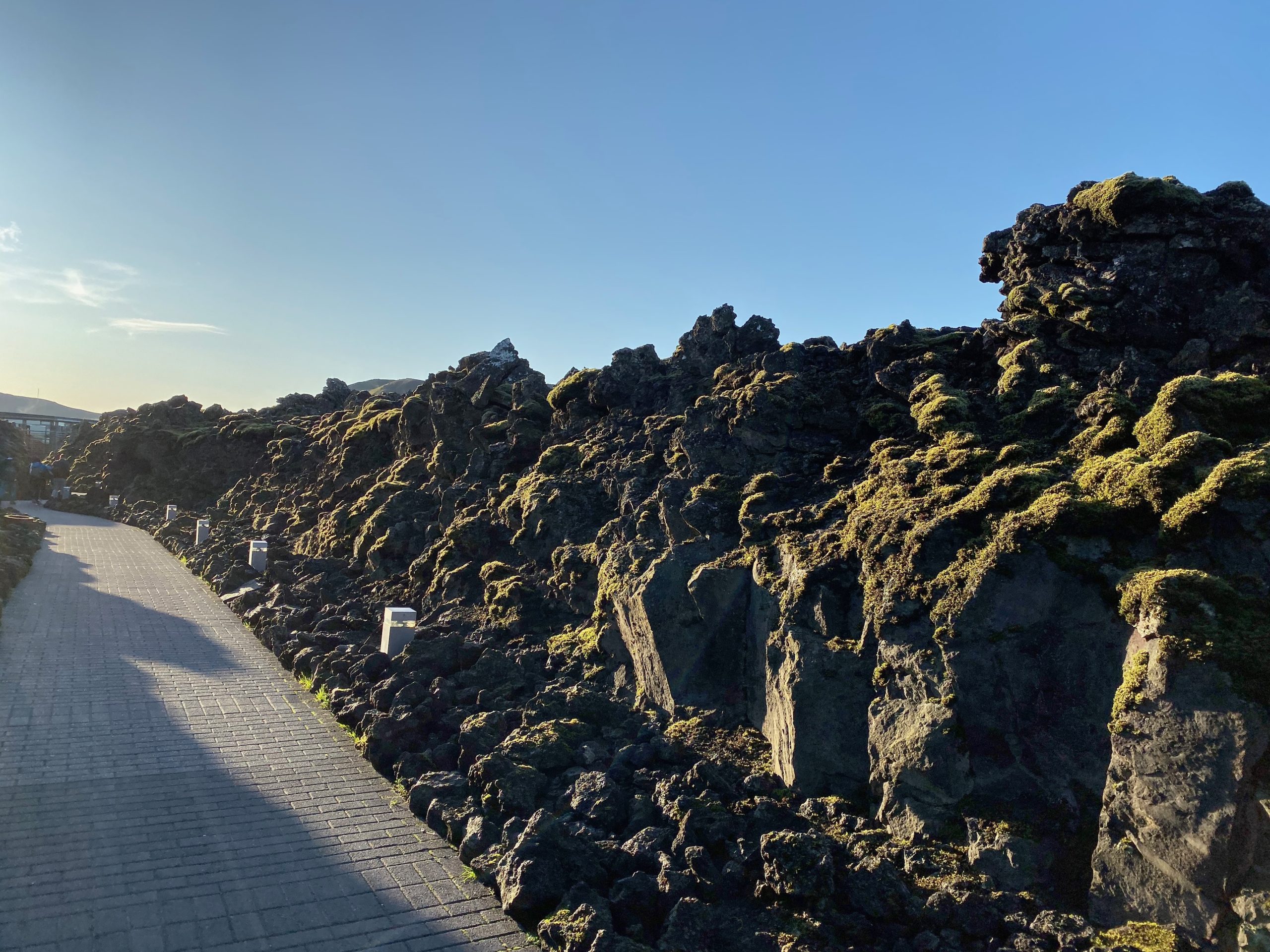
Before I even arrived in Reykjavík, I took a bus from the airport over to the country’s most iconic hot spring: The Blue Lagoon. The moment I got off the bus, I immediately walked past otherworldly rock formations that could easily be mistaken for those on the moon. The lava-like rocks are stacked in chunks, with a hint of moss covering the top. The walkway towards the Blue Lagoon passes right through this rugged landscape.
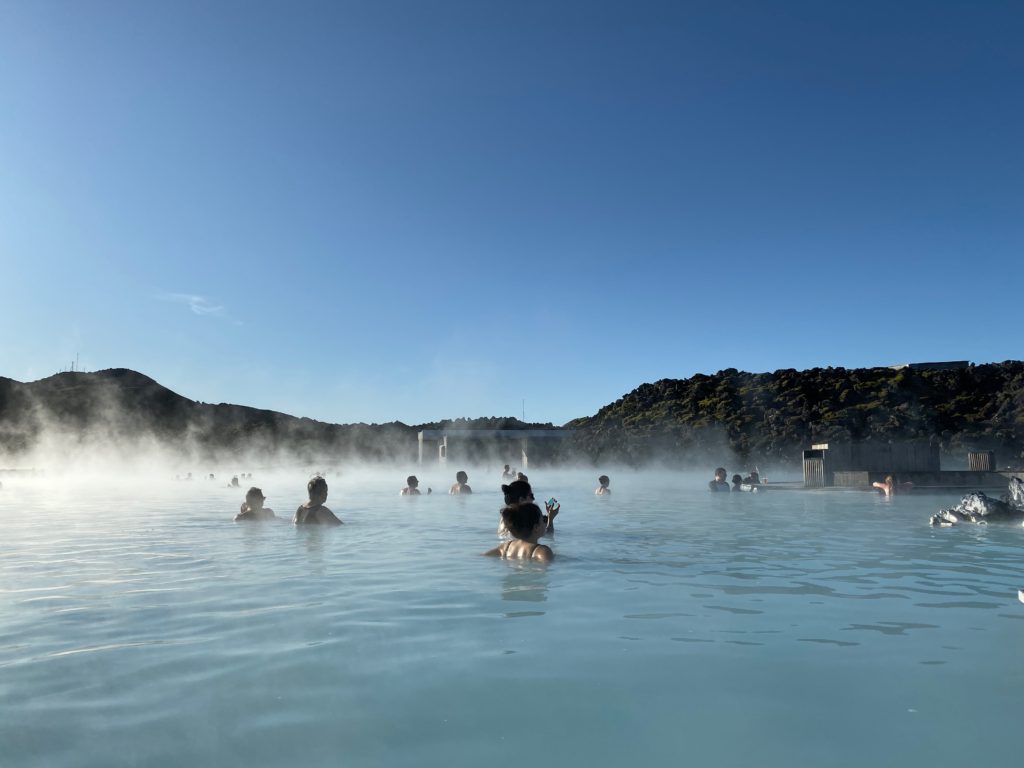
After a quick shower in the beautiful spa building, I stepped outside into the freezing Arctic air. Despite the cold, I was immediately warmed by the steam that came from the bright blue waters ahead of me. Once I stepped inside, I no longer felt the icy air, and instead felt the relaxing sensation of the geothermal spring. The naturally heated water is around 100°F. I could barely feel the surrounding cold air due to the high amount of steam from the hot spring. On this clear day, the sun shined across the lagoon, giving it a surreal appearance.
The water gets its light blue color from its high silica content. It is also rich in salt and algae. The hot spring gives bathers a sense of rejuvenation, as the minerals provide healing benefits to one’s skin. Visitors recieve one silica facial when they visit, as well as one complimentary drink at the poolside bar.
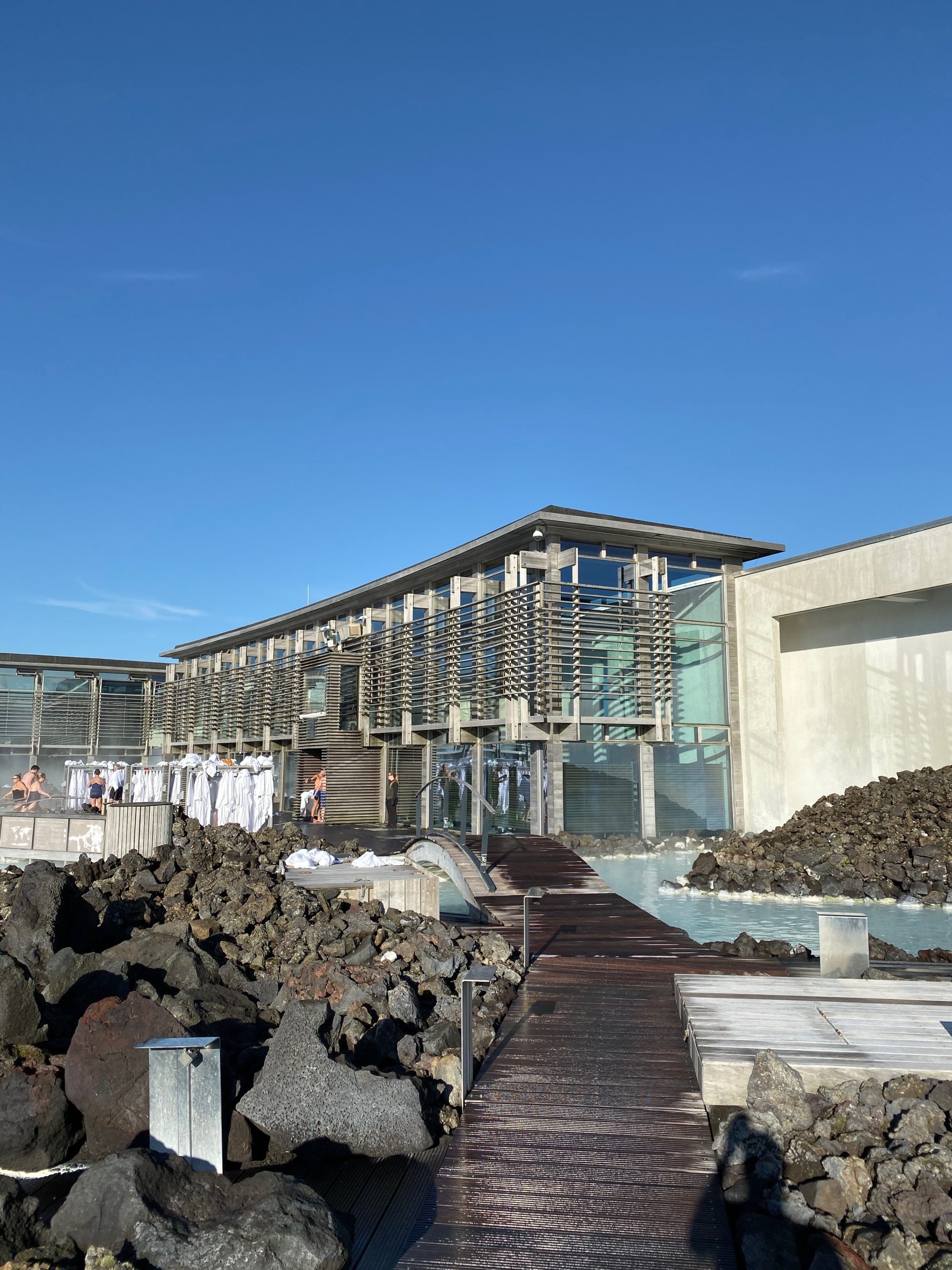
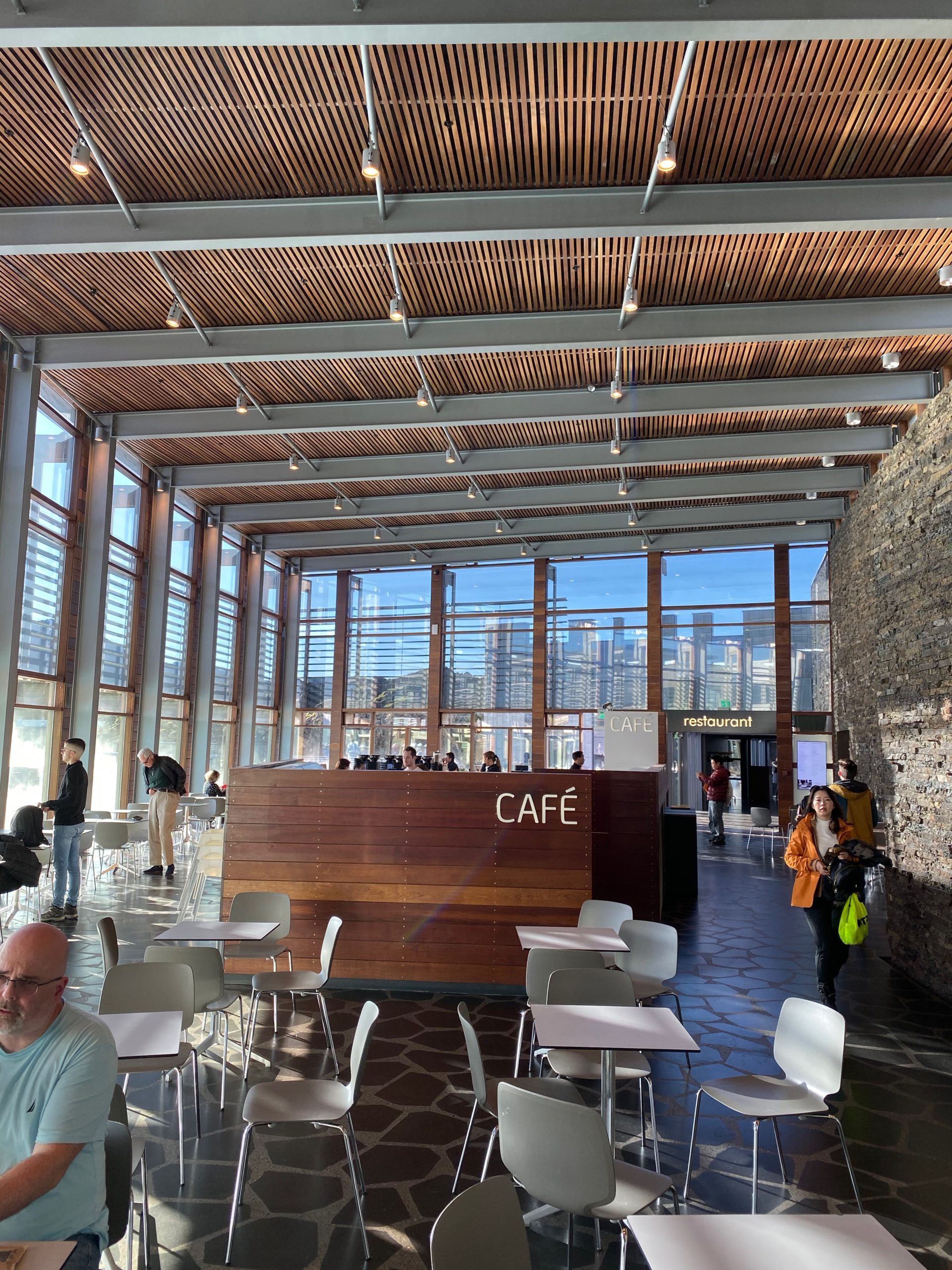
Industrial looking spa buildings surround the surreal blue waters. These wooden and glass structures were designed with the surrounding lava rock formations in mind. They seamlessly blend into the centuries-old landscape while providing visitors with state of the art changing facilities, a café, a relaxation area, and a gift shop. The inside of the complex feels like an extension of the surrounding landscape. With its basalt rock floor, wooden and steel ceiling, and large glass windows that view the lagoon, visitors feel like a slice of nature has come inside with them.
The Golden Circle
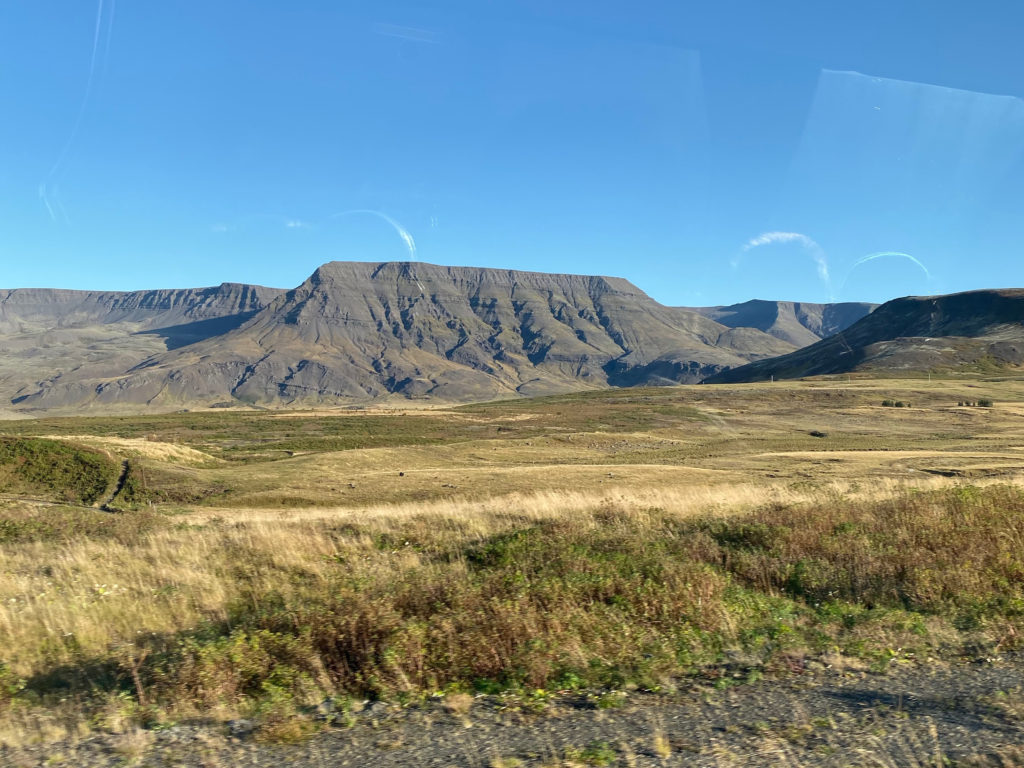
The Blue Lagoon may be the first attraction that comes to mind when people think of Iceland. However, there are plenty more sites to see around the whole country. Just outside of Reykjavík is an area known as the “Golden Circle.” This popular drive contains three of Iceland’s most well-known natural wonders. I opted to take a bus tour with Reykjavík Excursions to visit the Golden Circle’s three sites: Þingvellir National Park, Geysir, and Gullfoss. Like many tours across Europe, we were accompanied by a local guide who was knowledgeable,
Þingvellir National Park
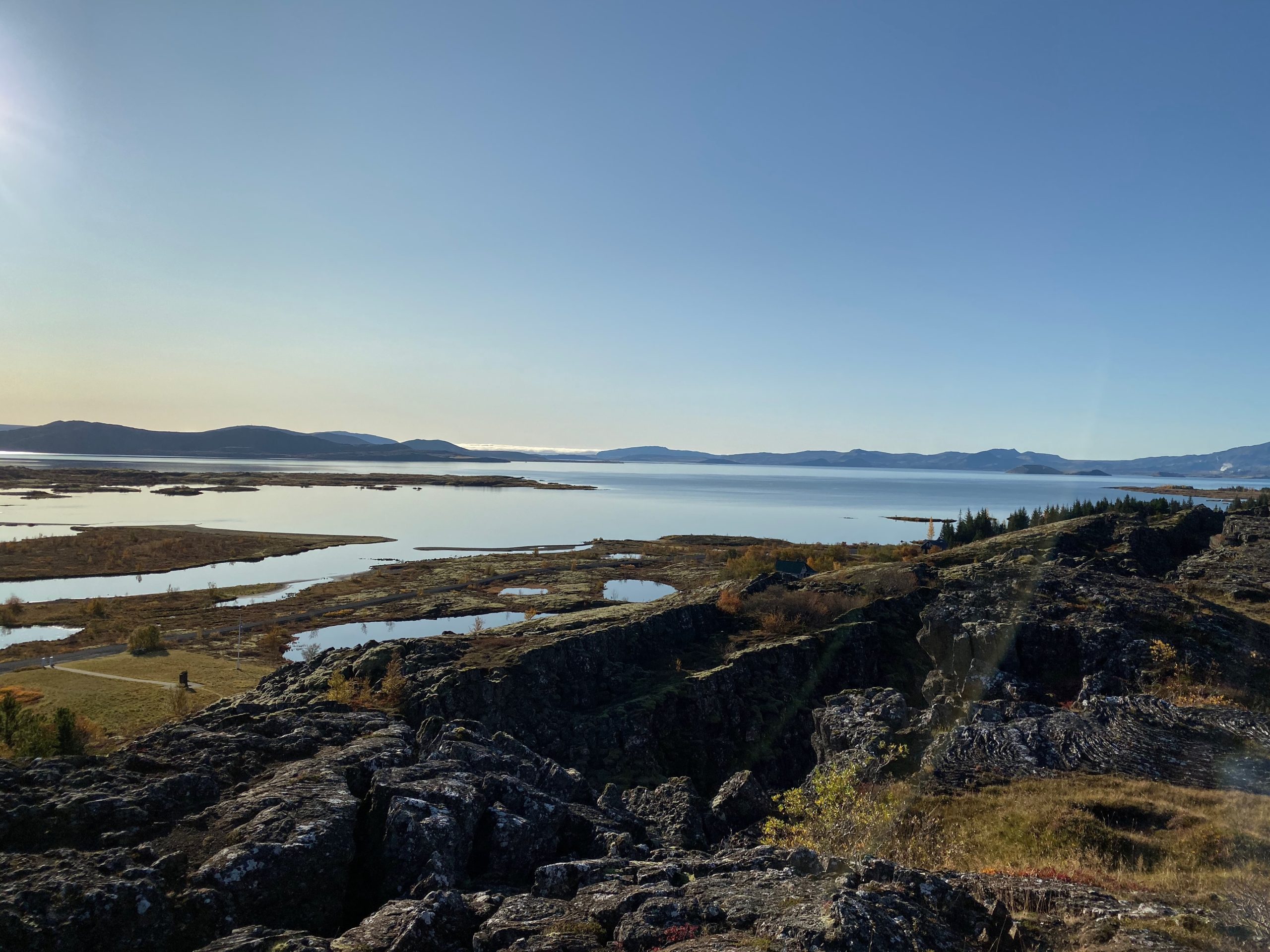
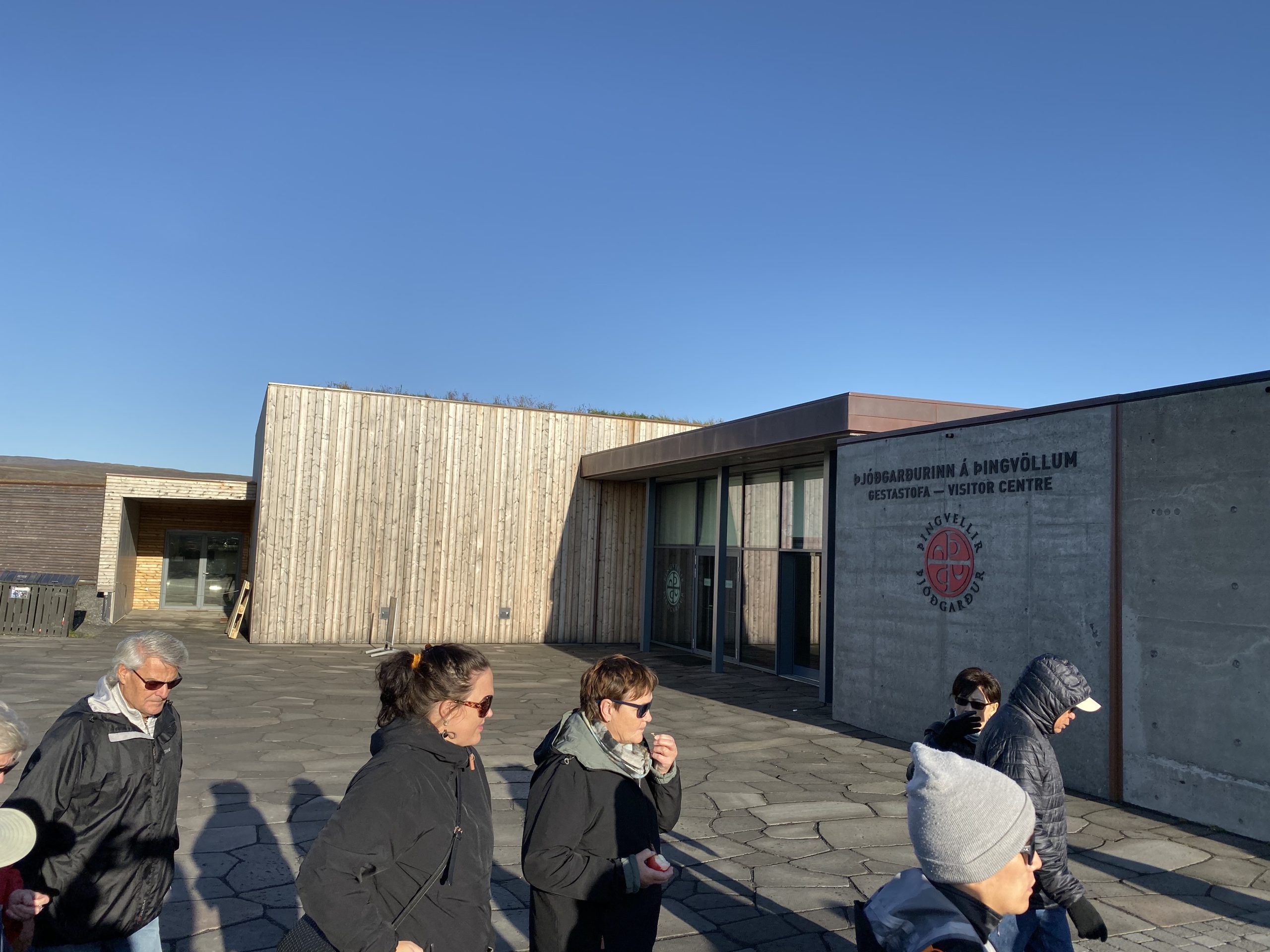
Iceland is located at the boundary of the North American and European tectonic plates. These plates have been drifting apart for thousands of years, and their edges are now several kilometers apart. The result is a breathtaking landscape filled with rugged rock scenery, bright blue lakes, and grassy fields. From the vantage point at the visitor center, I gazed across the landscape, which sparkled on this clear sunny day. Much like the Blue Lagoon, Þingvellir National Park has a visitor center that was inspired by nature. The simple and low buildings minimalize their impact on the surrounding landscape and feature wooden, concrete, and glass façades. Also like the Blue Lagoon spa buildings, the outside floor of this visitor center was inspired by basalt rock formations.
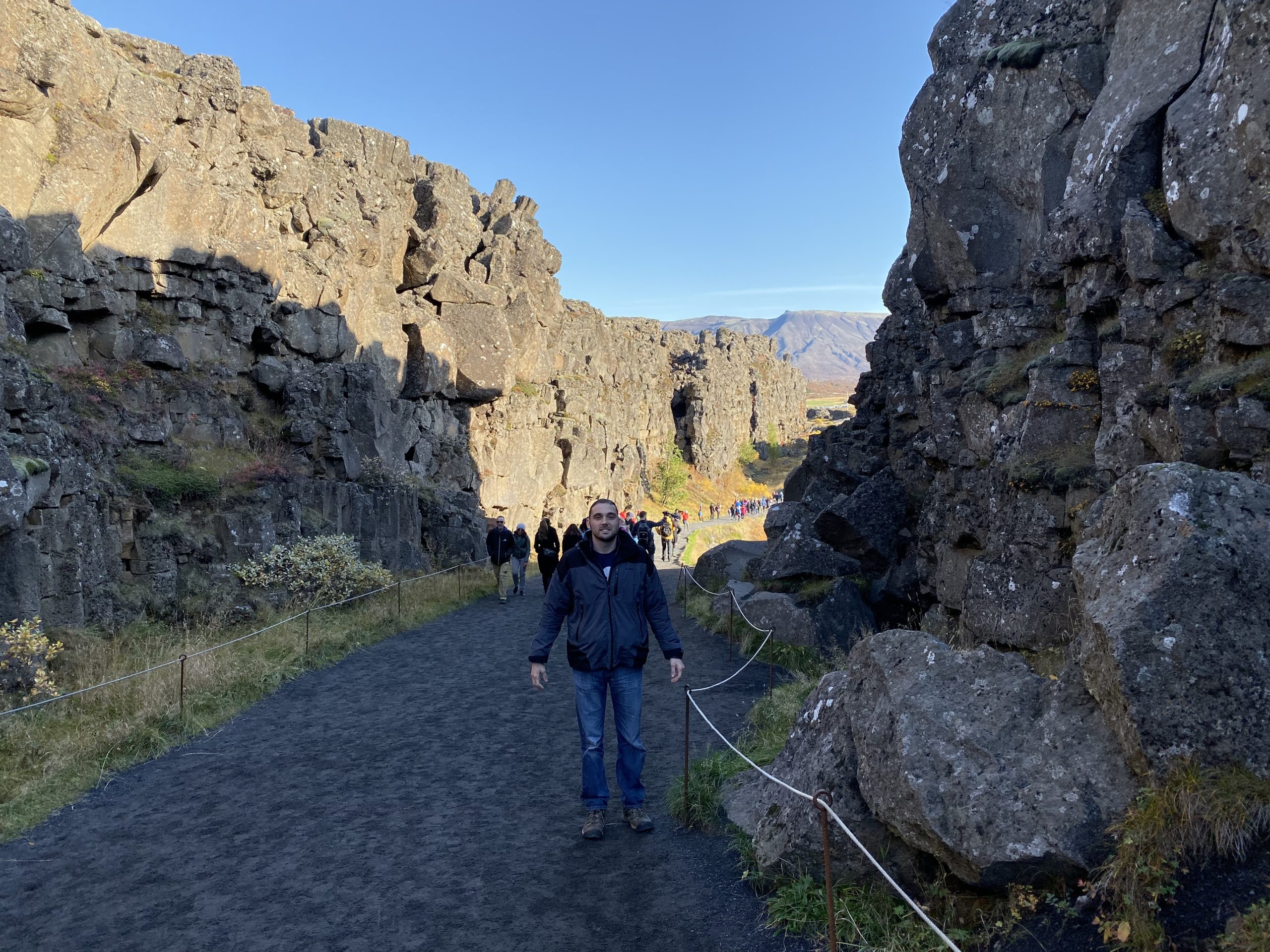
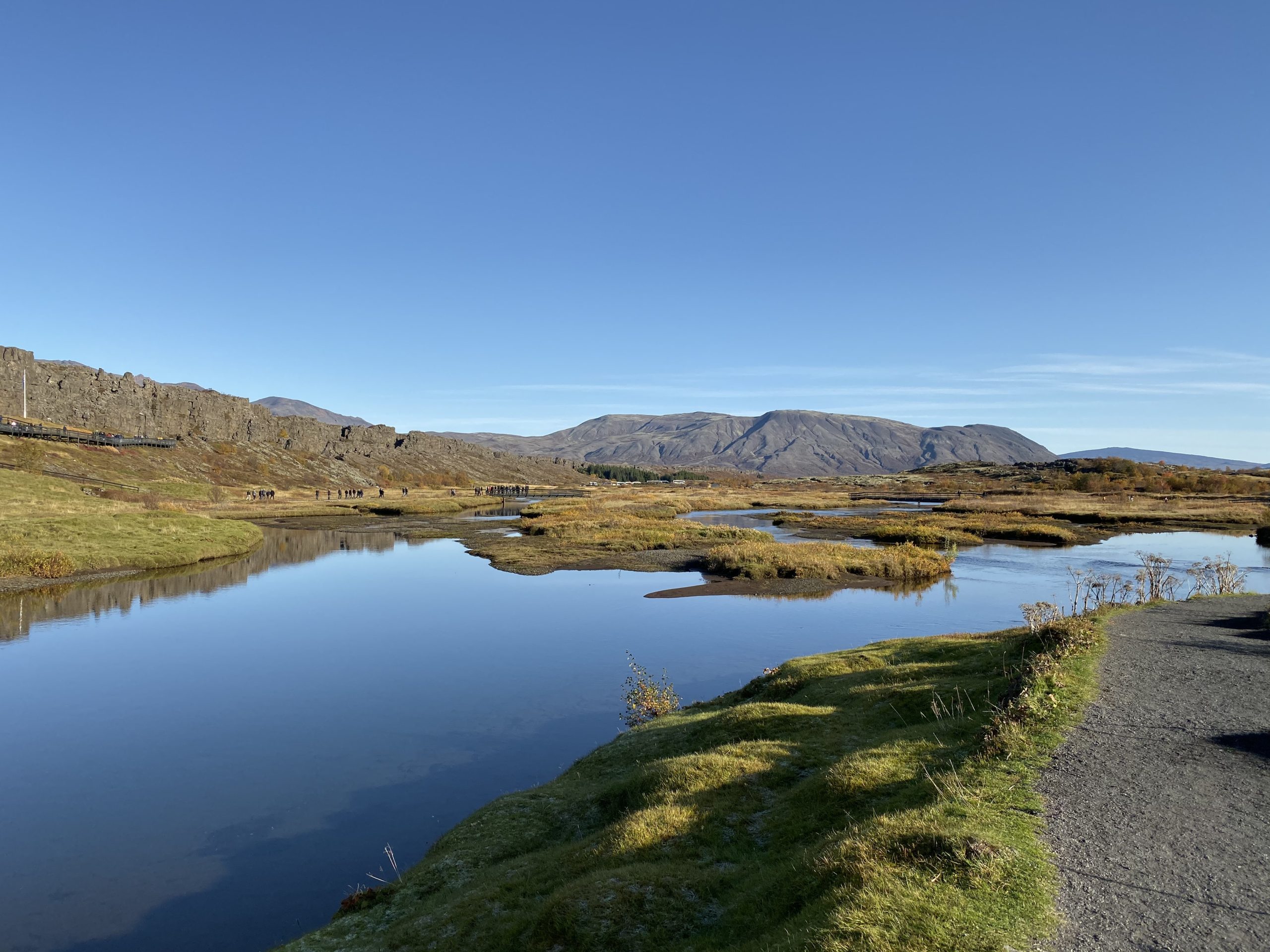
From here, I descended down into the park through the dramatic rocky rift that separates North America and Europe. I felt as if I was entering the earth’s crust as I followed the path through the rift. As I turned a corner, the rock formations opened up, and I once again got a panoramic view of the park’s lakes, particularly Þingvallavatn: Iceland’s largest lake. I explored this open area, which contained many lakes and expansive grassy fields that stretched on for miles with few trees.
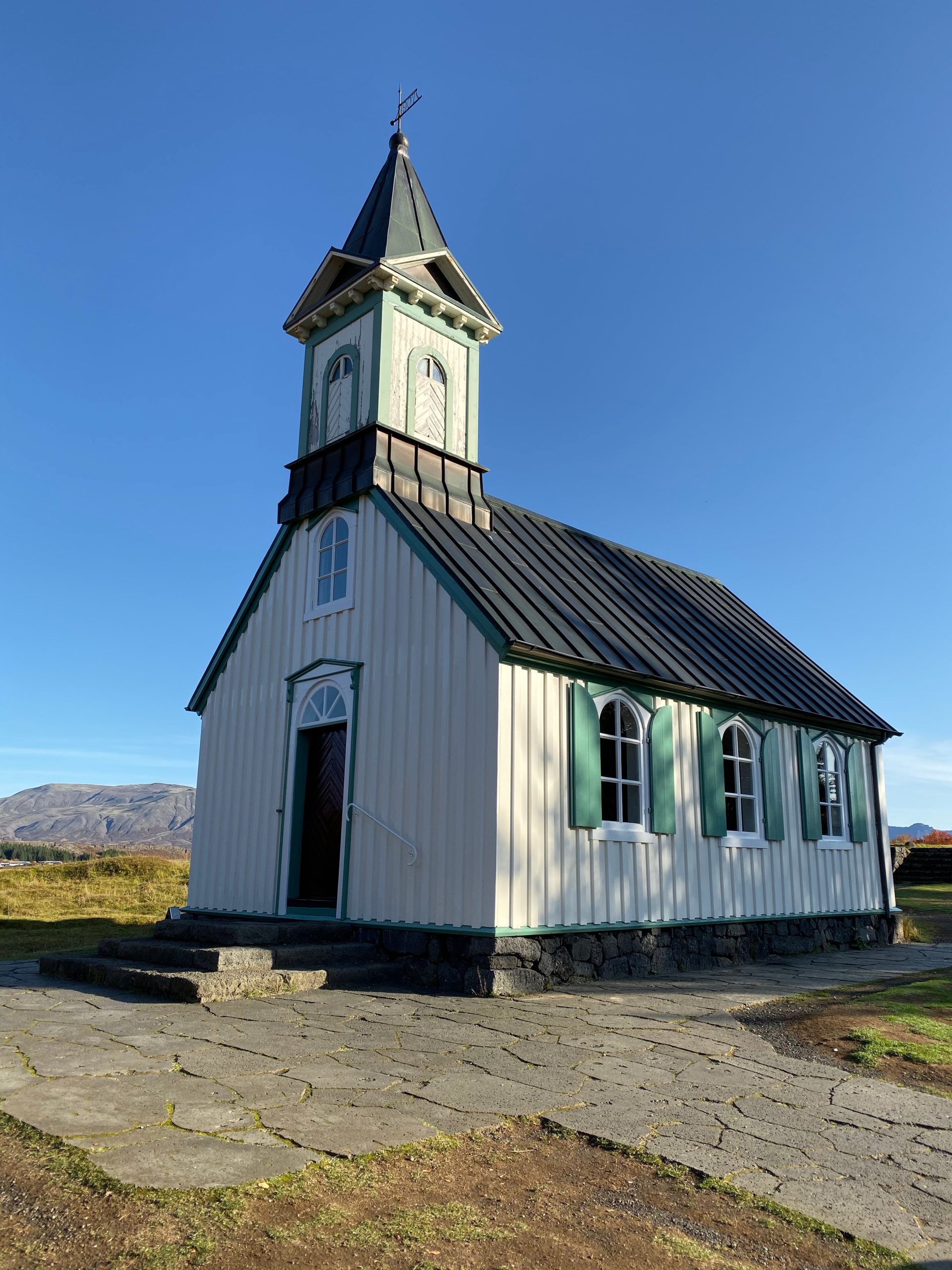
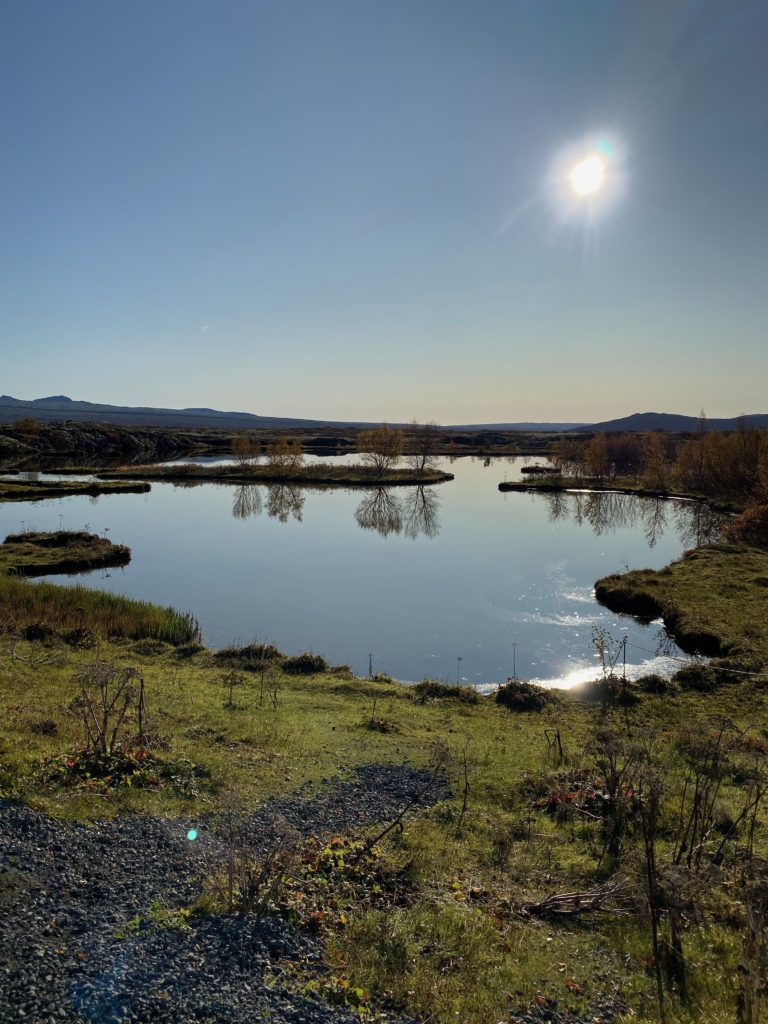
The park is also famous for being the historic location of Iceland’s parliament, where representatives gathered outside for thousands of years before the parliament moved to Reykjavík. Today, a cute church, known as Þingvallakirkja, sits on the site where the parliament met. The church follows a similar architectural style to the houses in Reykjavík, using brightly colored corrugated metal as its main building material.
Geysir Geothermal Field
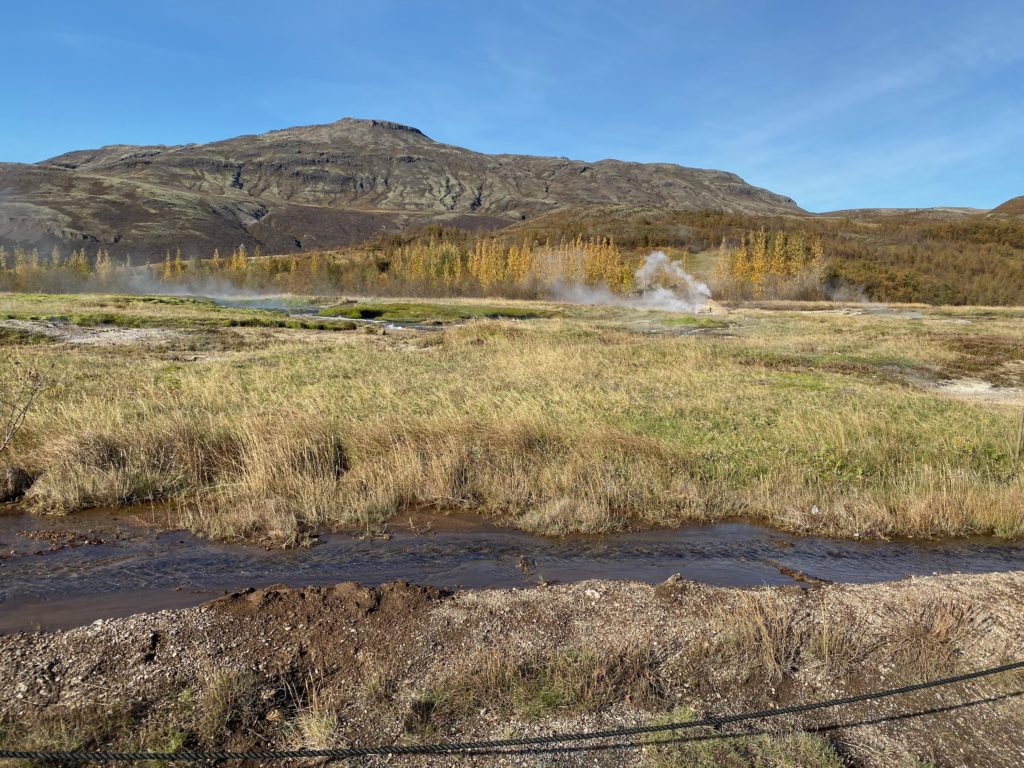
After a lovely stop at the park, our group got back on the bus and headed into the wild again. We drove through Iceland’s mysterious countryside for another hour before reaching our next stop: the Geysir Geothermal Field. As I had never visited a geothermal area before, this was an exciting experience to have. After the bus parked at a nearby lot, I began walking up the hill towards the geysers. I could already smell the sulfur and feel the heat coming from the ground in this highly active area.
I arrived at a crowd of people around the park’s most famous geyser: Strokkur. This is one of the few geysers in the world that is known to regularly erupt, making it popular with visitors. I waited patiently, watching the pool of water for any signs of movement. All of a sudden, before my eyes, a large bubble exploded, sending water and steam several feet into the air. The steam spread around the area as the water refilled the pool. The geyser erupts approximately every ten minutes, so I got to watch it erupt from a distance several times during my visit.
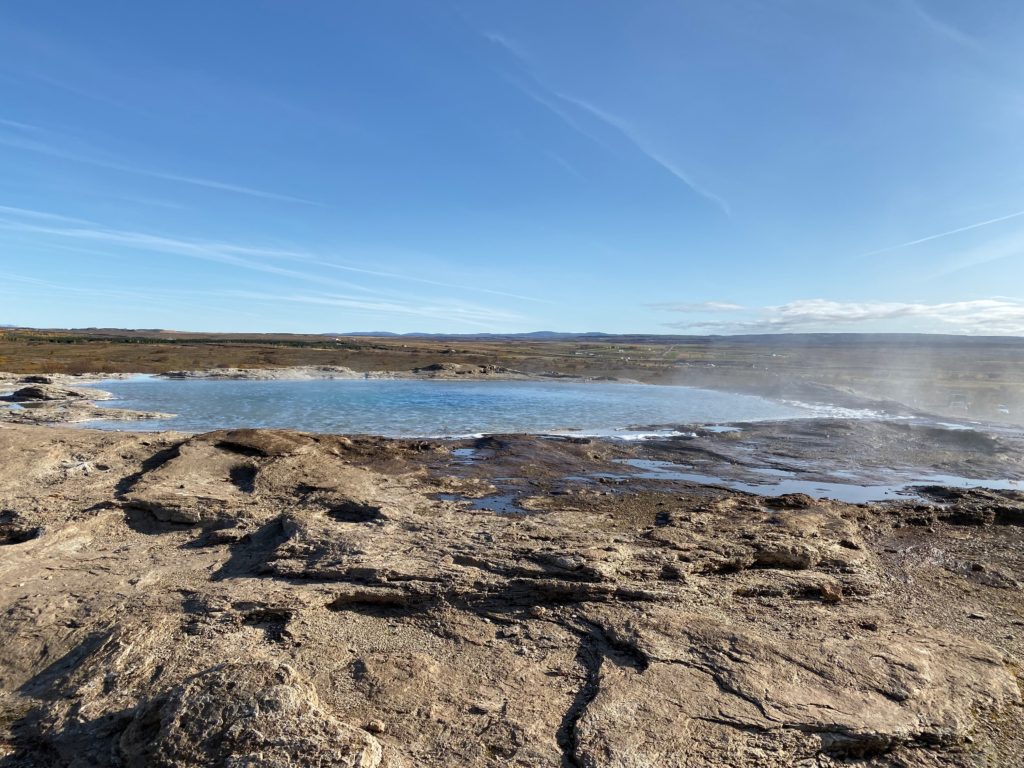
I continued wandering through the park, passing several more steaming geyser vents. The largest of these is Geysir, where the park gets its name and where the English word “geyser” originated. This large pool of water has been sleepy lately but has erupted in the past, sending water as high as 230 feet in the air. The pool itself is primarily dark blue but has hints of lighter blues, grays, and whites as well. The geothermal area has similarities to those in Rotorua, New Zealand and at Yellowstone National Park in Wyoming, both of which I have yet to visit.
Gullfoss
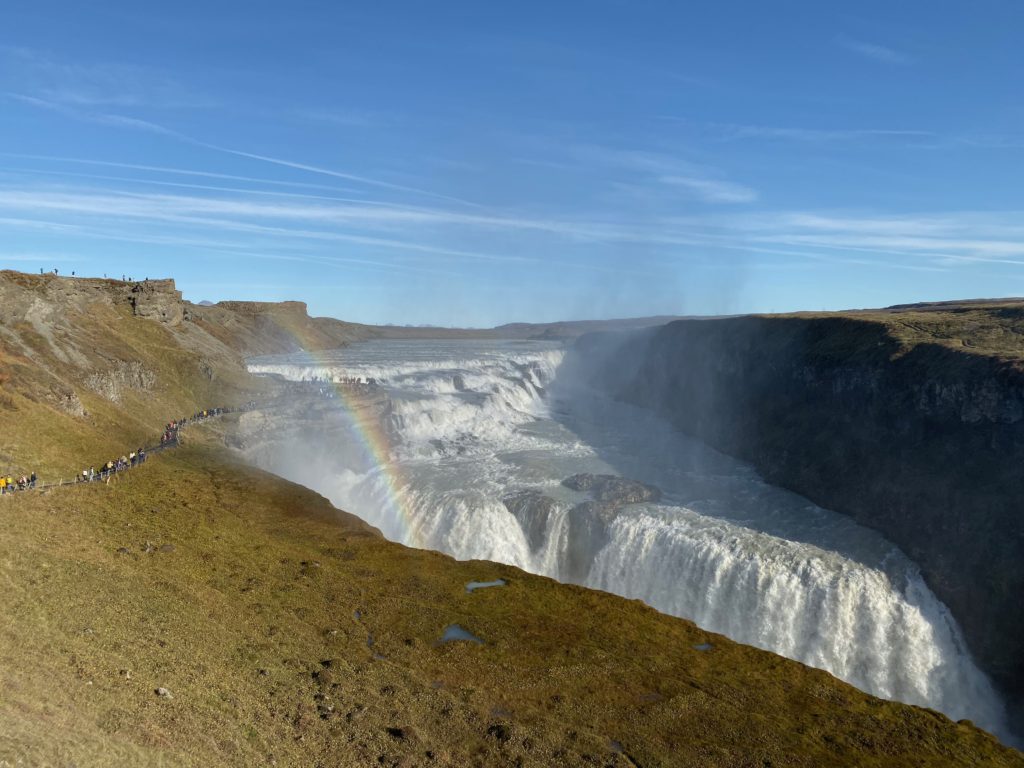
From the Geysir Geothermal Field, it was a short bus ride over to our final stop at Gullfoss: one of Iceland’s largest waterfalls. As I got off the bus, I could already feel the mist coming from this mighty waterfall. I walked over to the lookout point where I got a panoramic view of the falls, which cascade down over rocks within a large rift. On this clear day, the mist from the falls created a rainbow, adding to their mystical appearance.
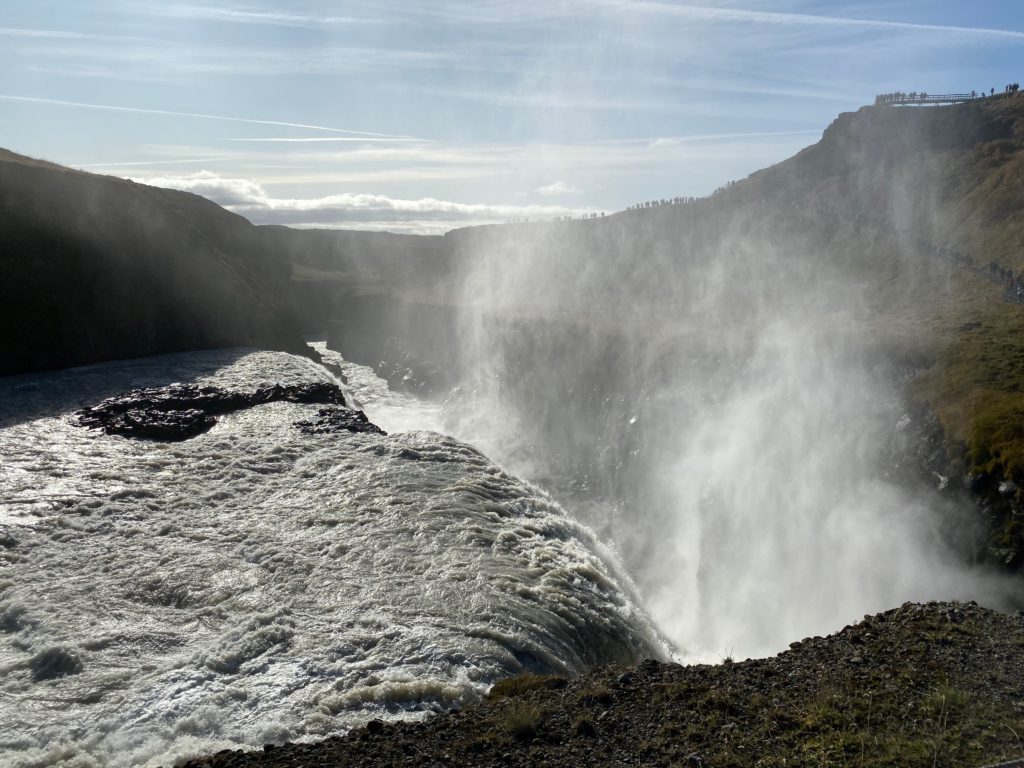
I walked down closer to the waterfall, where I needed a rain jacket to avoid getting wet. From this viewpoint, I could really get a sense of how powerful the falls were, as the moving water rumbled loudly just in front of me. Like many places in Iceland, Gullfoss has an important story behind it. In the early 20th century, the falls were threatened by foreign investors, who wanted to purchase the land and use the water for a hydroelectric project. The owner’s daughter, Sigríður Tómasdóttir, walked barefoot to Reykjavík to persuade the Icelandic government to stop the project and even threatened to throw herself from the falls. After intense lobbying, the golden falls were sold to the state of Iceland and have since been protected. Sigríður Tómasdóttir is often regarded as Iceland’s first environmentalist.
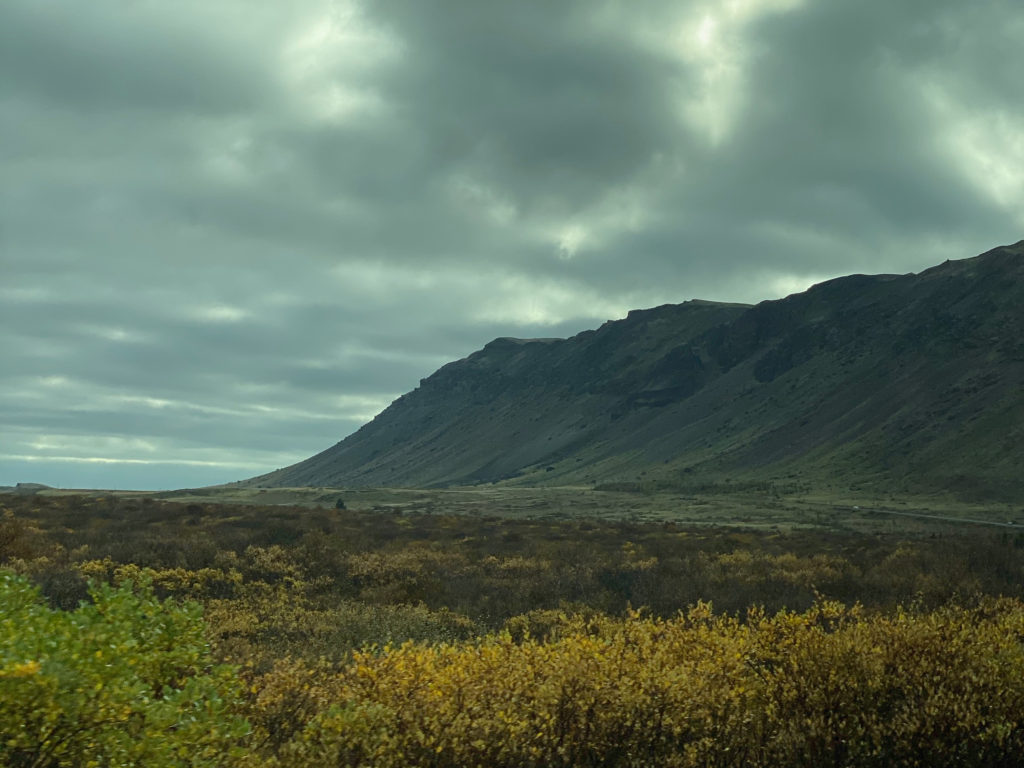
After the stop at Gullfoss, our bus headed back towards Reykjavík. We passed more of Iceland’s rugged landscapes as clouds started rolling in. Our guide used this time to talk about Iceland’s folklore, including some memorable ghost stories! I will never forget Djákninn á Myrká, a chilling story about a deacon and his girlfriend. The story even inspired an Icelandic brewery to create a strong stout, known as “Garún.” I was able to try this beer at the airport before leaving the country.
Overall, I could not have been more impressed with my tour of the Golden Circle. Due to its close proximity to Reykjavík and its short length of about seven hours, it is popular amongst visitors who want to get a taste of Iceland’s unique natural wonders.
Northern Lights
Due to Iceland’s location at the edge of the Arctic Circle, it is one of the few places on Earth that one can catch the winter spectacle called the “aurora borealis,” also known as the “northern lights.” Even though the lights are one of the main attractions that
When I discovered that both of these factors were in my favor, I quickly booked a northern lights bus tour. One of my hostel mates and I got on the bus, where a guide who specialized in northern lights folklore began telling us stories about the lights as we drove out of the city and towards clear skies. On our way over, I saw an eerie green glow develop in the sky. I couldn’t quite tell if I was seeing the lights, or if it was just more pollution. The lights got stronger, and our guide pointed them out. It was my first glimpse of this amazing spectacle!
Eventually, we reached an area far from the bustling city and away from any light pollution. We exited the bus and walked into the darkness. Even though it was late September, the weather was freezing cold outside at this northern latitude. The group waited patiently, staring into the skies looking for any sign of movement. I began to see the same green glow appear in the sky. At first, it was faint and hard to see, but it got stronger.
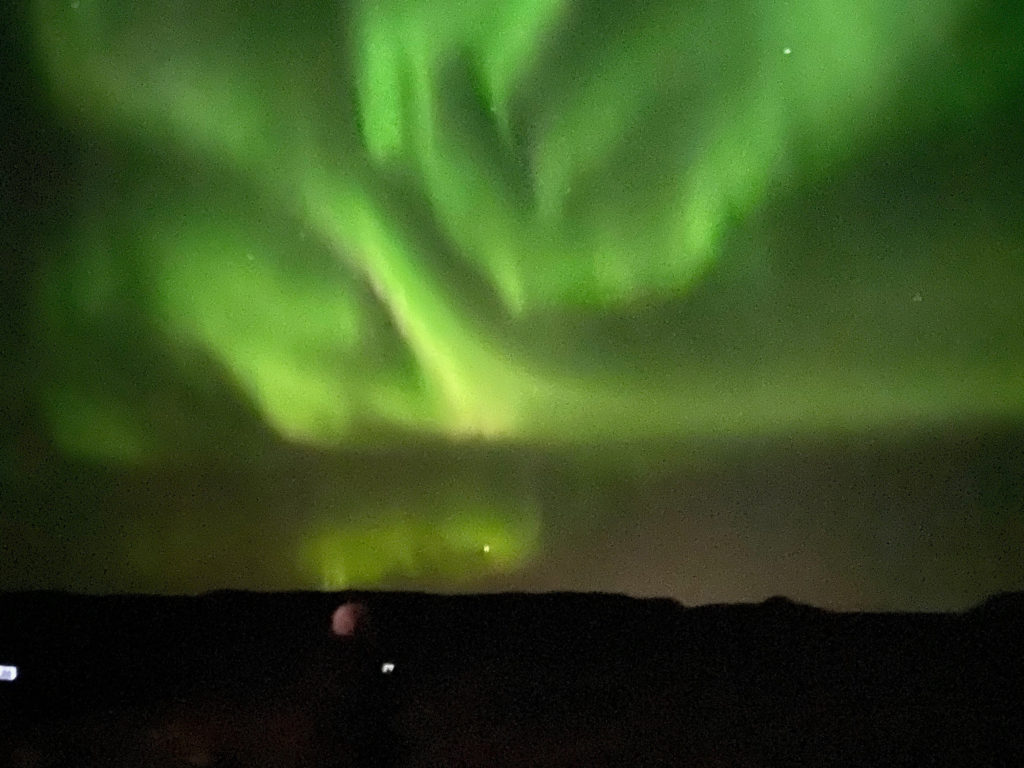
Soon, the lights came out in full swing, moving and dancing right in front of our eyes! Although they were primarily green in color, I also saw hints of yellow and purple. They continued swirling around in the sky. Although my photo makes the lights appear bright and vibrant, they are actually about as faint as the surrounding stars. Every time bright oncoming headlights approached the parking lot, I had to look away and let my eyes readjust to the darkness before I could watch the lights again. Although they looked much different in person than I had always pictured, they were the cherry on top to my beautiful Icelandic adventure.
Iceland is full of many natural wonders. From the famous Blue Lagoon hot spring, the unique natural landscapes of the Golden Circle, and the mysterious northern lights, this island gives visitors an experience that is unlike anywhere else in the world.
